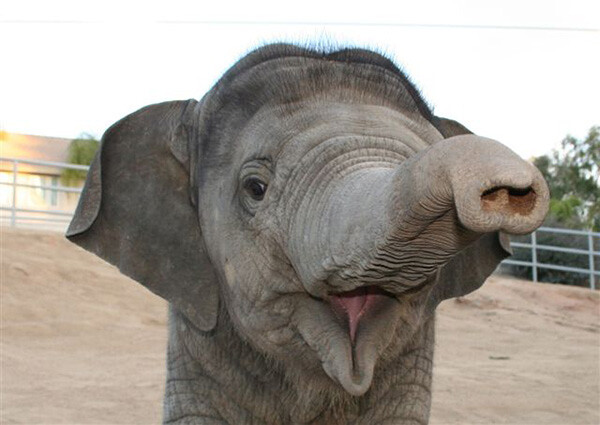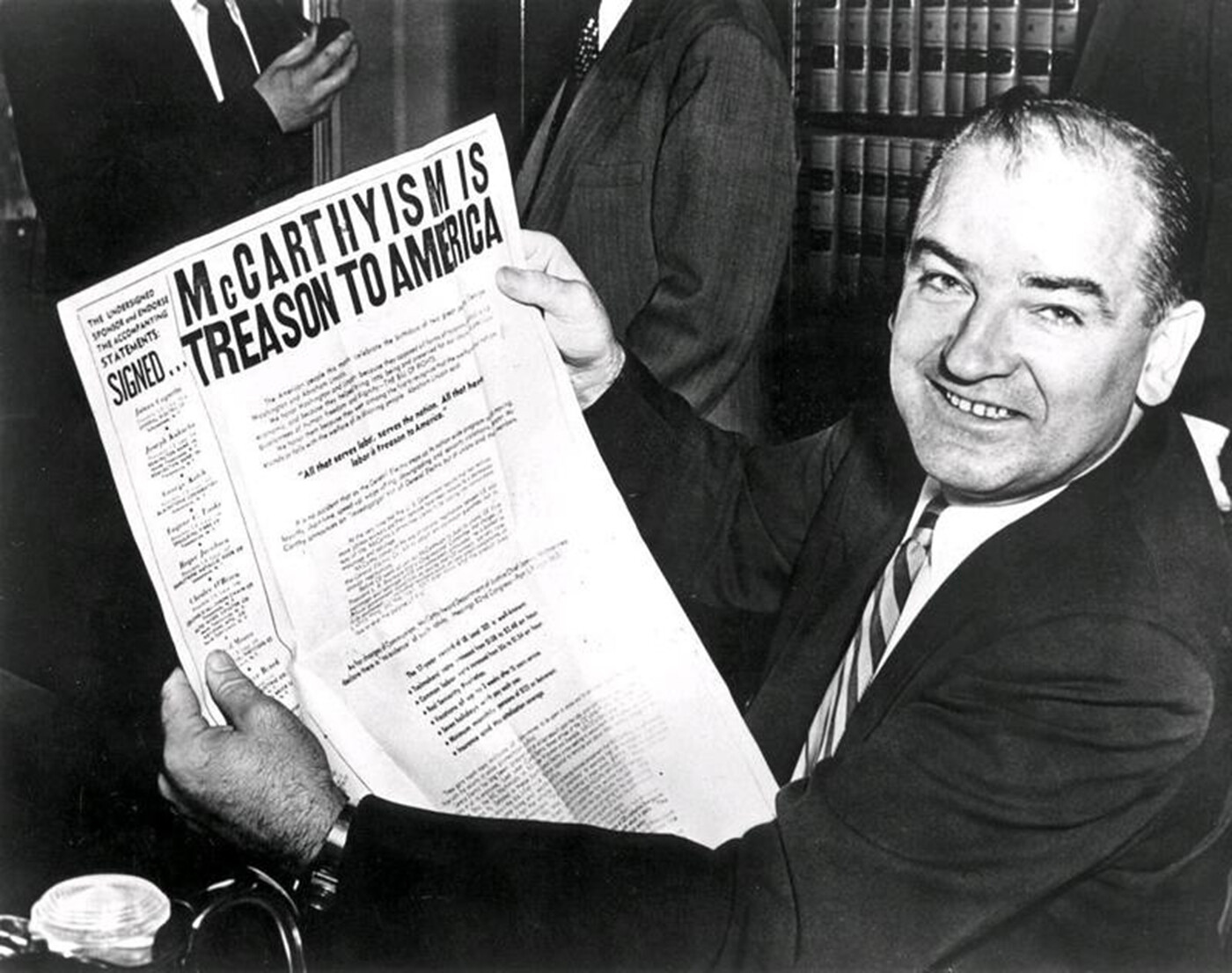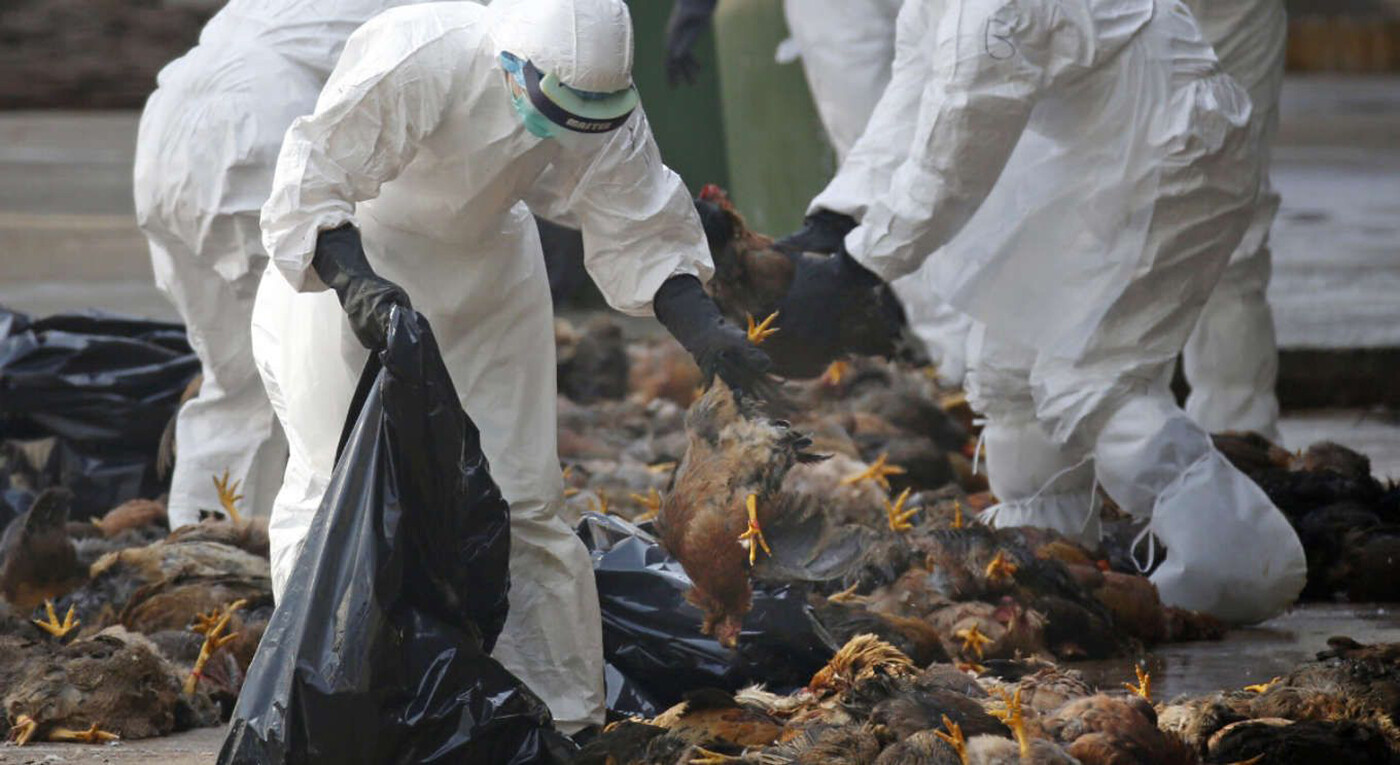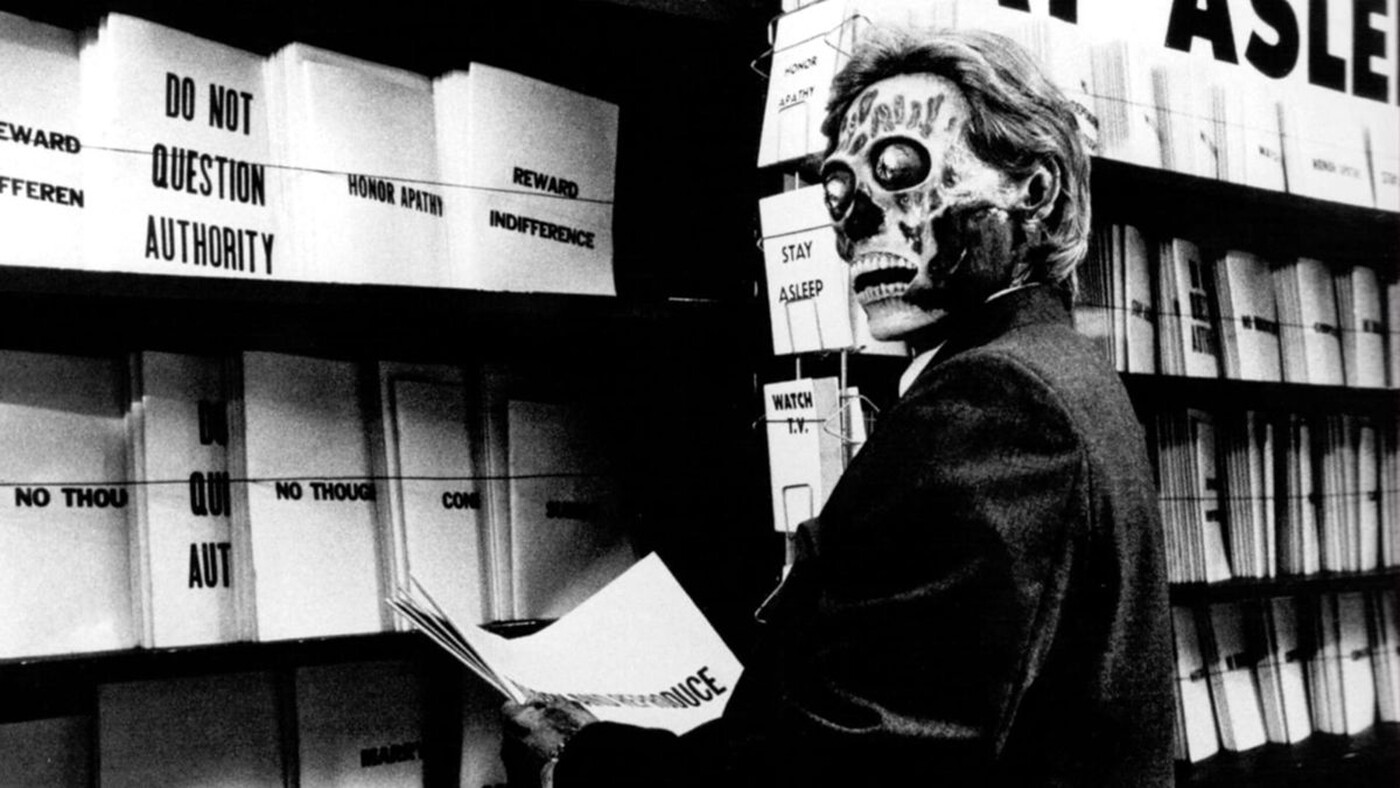During the Covid pandemic, I watched as several close friends were lost down the dark rabbit hole of Covid conspiracy theory. These are not the right-wing types who you read about in the mainstream news. One of these friends, let’s call her Molly, is a brilliant and progressive scholar.1 Her theoretically rich writings have won book awards. She is a talented teacher. She supports the unhoused, immigrant communities, and racial equity. How is it possible that during the pandemic she began to believe that that there is a consistent “them,” a cabal of global and national elites, perhaps a “deep state,” who, through lockdowns, mandatory masking, and vaccination requirements, are enacting an international program to marginalize and control “us”? Why would she believe that vaccinations spread Covid rather than prevent its worst symptoms, or that Covid-19 might not be a real disease?


A 1901 photograph taken by Dr Allan Warner at the Leicester Isolation Hospital of two boys, one vaccinated against smallpox and one who hadn’t been vaccinated. Photo: The Jenner Trust.
Molly does not follow the usual right-wing suspects like QAnon or Alex Jones’s InfoWars. I don’t believe she thinks that the Sandy Hook massacre was a hoax or that pedophiles are abusing children in the basement of a pizza restaurant. Rather, she is deeply skeptical of biomedicine and the state. She follows the websites and blogs of alternative medicine portals like GreenMedInfo, a website run by Sayer Ji, an alternative medicine advocate who, according the McGill Office for Science and Society, “curates the scientific literature with his bachelor’s degree in philosophy,”2 or Joseph Mercola, an osteopath and natural health website personality who has been named one of the “disinformation dozen” and “the most influential spreader of coronavirus misinformation online.”3 These sites are what commentator Farhad Manjoo terms the “wellness-conspiracy industrial complex,” a complex of sites and blogs that are “staggeringly profitable” from selling alternative remedies.4 My conspiratorially minded friends have directed me to other sites supporting alternate Covid realities, including “Ask the Experts (Covid-19 Vaccine)” on Brand New Tube, “Techno-Tyranny: How the US National Security State Is Using Coronavirus to Fulfill an Orwellian Vision” on the Last American Vagabond, and “Ground Control to Planet Lockdown: This Is Only a Test” from the Strategic Culture Foundation. These friends trust the “clinicians, researchers, and health experts” on QuestioningCovid.com before they would believe Helen Chu at the University of Washington’s Seattle Coronavirus Assessment Network.5 Molly considers her neighbors who get their news from the New York Times dupes, and she feels disgust when they try to argue against her. Though she is not a Trump voter, I have my own fears that her perspectives overlap with ones that will allow for Trump’s return to power, transforming the United States government in authoritarian, even fascist, ways. She thinks that I am the one blinded to the truth of a powerful coordinated elite who plan to take away my liberties through fascist methods. It has become difficult for Molly and me to talk about anything except trivialities. What happened to our shared sense of reality?
You might disdain Molly or want to call her “deplorable.” I am interested in exploring a different way of thinking about the situation, however. Were she a conservative living in a deep red state, that would be one kind of problem. What it means for a well-educated and progressive member of the academy, a “coastal elite,” to adopt Covid conspiracy theories so readily is a problem I cannot easily dismiss. Covid brought Molly into contact with a world that matched well with her—indeed, with many of our—professional training. Both a capacity for deep independent research, these days undertaken on the internet rather than through face-to-face interviews or ethnographic field work, and a critical hermeneutic of suspicion that says the world is never quite as it appears, combined to leave her susceptible to the alternate realities of Covid conspiracies. I have these same skills and training. Maybe you do too. You think this dive into unreality couldn’t happen to you—I’m not so sure. Didn’t many of us not long ago confidently assert in the linguistic turn that the world was created entirely through language and discourse? With enough time to do our “own research” and few boundaries around the vectors critique can take, one might end up joining a “great derangement” rather than exposing hidden truths.6 Isn’t it awfully easy to lose sight of the real?


June Almeida, a Scottish virologist and pioneer in virus imaging, identification, and diagnosis, using a Philips EM300 electron microscope in the 1960s. Almeida succeeded in identifying viruses that were previously unknown, including a group of viruses that was later named coronavirus, due to their crown-like appearance, in 1966. Her immune electron microscopy innovations and insights contributed to research related to the diagnosis of hepatitis B, HIV, and rubella, among other viral diseases. Courtesy: Joyce Almeida.
Viral worlds are a key site from which to explore questions of the real. The “real” is often understood to be epistemologically associated with the visible. Yet, viruses are “unseens,” meaning they are not accessible to unaided visual perception, proprioception, or interoception.7 Existing at the edges of our technical capacity to enhance sight, virologists need to make an imaginative leap between the structures they can see with an electron microscope and what they know from theories of chemical interaction. Viruses were identified later than the bacteria in microbial history when, in 1879, Martinus Beijerinck filtered a residue from plants sick with tobacco mosaic disease and discovered it could infect healthy plants. He gave the substance the name “virus.” The newness of our limited knowledge of the virosphere (the sum-total of viral genomic diversity) cannot be overstated; most knowledge of the immense numerical abundance and functional magnitude of viruses has occurred only in the past two decades (this is especially true of the viruses’ beneficial contributions to life on earth). The viruses that create human illness can be known from their effects, but sickness often spreads unevenly among populations, so some will become ill while others will not, and some will die while others are spared. Throughout history, people have sought explanations, many of them spiritual or personally meaningful, for this unevenness. The invisible nature of viruses means that we are left dependent upon the power of secular reason, the tools and techniques of scientific inquiry, and experts and expertise to identify them and find their reality credible. Without these tools, we are susceptible to believing in occult forces. In populations already suspicious of science and skeptical of where elite interests lie, the reality of imperceptible viruses, their effects, and appropriate responses to infection are left open to doubt and disbelief.


The Matrix (1999), written and directed by the Wachowskis.
Across the interpretive social sciences, cultural studies, and post-structuralist scholarship, the idea that there is, or can ever be, a “real” has been called into question and stigmatized as naive. In place of a real, we have described the world as socially constructed. Until very recently, there was the sense that material objects (like viruses), which are not “made” by society, are uninteresting, while social objects, like gender, medicine, time, or capitalism, are not stable, singular, or transparent—in short, not “real.” The value of a social constructionist viewpoint is that, if phenomena exist in society and not in the world, perhaps we can change the things we don’t like. Socially constructed worlds also allow us to appreciate human difference by denaturalizing social configurations: it is always possible to live otherwise. The idea that the world is socially configured, and that it can be deconstructed to illustrate its contingent nature, has been a particularly hopeful epistemology: it allowed us to believe that change was possible.
This way of thinking became compromised, however, once it was taken up by the forces of reaction and right-wing populism. What to make of it now, when voices on the right argue that climate change or Covid-19 are made up—socially constructed—by a cadre of powerful elites who are out to control our bodies, minds, identities, and economies? That sounds a lot like arguments that, until very recently, were made on the critical left about the power of the right. In this world turned upside down, we have no choice but to rethink our attitudes toward the real so we might find a real that is neither naive nor simply social.
As it happens, a wide set of thinkers are doing just that through conceptual work that rethinks the real by reframing linkages between social and material worlds, by examining whether such linkages are necessary to make something “real,” and by combining social and material realms in new ways. Some of these thinkers are “object-oriented,” which makes them useful for thinking about viral objects. Graham Harman, for example, rejects Kant’s “Copernican Revolution,” which puts the knowing human at the center of the universe, reduces objects to artifacts of human cognition, and makes the real impossible to think. He rejects what are called “philosophies of access,” which privilege human access to objects over an objective world independent of mind. Harman and other object-oriented philosophers (like Quentin Meillassoux, Levi Bryant, and Jane Bennett) argue that there is a vibrant real that exists beyond human perception and cognition—there is a world that is neither socially constructed nor made up of dead, inactive things. This might seem a mundane observation if you are a natural scientist, but it is in fact extraordinary if you are a philosopher who is curious about how we come to know what we think we know. Harman develops a phenomenology of objects to argue that objects encounter other objects in particular ways; entities affect other entities and create meaning with other objects. One of the ways Harman speculates on the existence of the real is by arguing that objects are never simply created or exhausted by their relations and can “withdraw” from relationality.
The Elephant Endotheliotropic Herpes Virus (EEHV) is an excellent example of the capacity of objects to enter into and withdraw from relations. The Herpesvirus represents itself to the body of elephants and to veterinarians as viremia in mild to acute expressions, but the Herpesvirus at other times will evade representation-as-symptom and withdraw. EEHV moves silently; it hides and reemerges, staying latent for many years, without the apparent awareness of elephants or zookeepers. Ursula Muenster and I coined the term “viral creep” to reflect the capacity of EEHV to emerge suddenly and to violently kill an elephant in a matter of hours, or just as readily to creep into the background for an individual or a population.8 Virologists who study this still do not know where latent EEHV resides in the elephant body—maybe it is the heart, maybe the lung or nerve endings. Elephants can be similarly withdrawn. We can guess and imagine what makes them happy and whether it is possible for them to live meaningful lives deprived of their complex social and cultural relationships in close proximity to humans. But we do not know exactly what causes them stress, how stress is experienced and manifests in elephants’ bodies, or if stress alone is the reason for their new vulnerability to EEHV. EEHV and elephants have an existence and relations beyond human access, but they are still real. We should recognize that we cannot and will never know all there is to know about entities that withdraw, or which cannot be represented to mind.


Elephant Endotheliotropic Herpesvirus (EEHV) is one of the leading causes of death for Asian elephant.
Marcus Gabriel is another thinker exploring the real. Gabriel puts forth a both/and argument supporting what he terms “new realism.” In contrast with “old realism” in which there was a thing-in-itself independent of mind and which we could access only through the categories of the mind, in Gabriel’s new realism there exist both things in themselves and things that are real from a viewer’s perspective. Gabriel’s new realism has two principles: 1) reality is not a big thing that exists out there, it is fragmented, and 2) it is possible to know reality in itself. A human perspective on the real is one form of the real but does not obviate the simultaneous existence of a mind-independent real. Gabriel is interested in a world which is made up of various domains, all of which he says are real. Some domains, like viruses or the immune system, are the purview of the natural sciences, while others—he uses the example of the state of Germany—are not. His work is a challenge to physics and other sciences that seek a unified system of the real. For Gabriel, not all domains intersect or interact, though they are all real within a domain, what he calls a “field of sense.” Therefore, he argues that the “world,” or the whole in which all domains coherently come together either with or independently of human thought, does not exist.9 For Gabriel, what exists is everything else. This would include Covid conspiracies that are real inside their domain.
Another important point for Gabriel is that the real of the object-in-the-world does not determine phronesis, or how we should ethically and practically respond to its existence. In relation to the Covid-19 pandemic, for example, he argues that what we know about the virus through the natural sciences is never going to be sufficient to justify human ethical decision-making; it’s not just a matter of believing in or following the science.10 There will always be a gap between scientific expertise and moral and political judgement. At the start of the Covid pandemic some things were known, like how to make an mRNA vaccine or how prior SARS coronaviruses had evolved and spread, but much was and still is unknown. We will never have so much information about objects in the world that we can avoid decisions about what to do with that information; scientific perspectives do not create all that is real. He terms the wish that scientific thinking and objectivity can or should replace political thinking in relation to the pandemic “virocracy.” Virocracy is not the way out from populism and its hatred of expertise, he argues. Just as Gabriel believes that things exist without our observation, we also cannot retreat to a “world” or a “real” that does not include humans and our actions as part of the real. New realists like Gabriel support neither immaterial constructivism nor naive scientism breaking the exclusionary bond between the material and the real.
Literary scholar Monika Kaup is another thinker who rejects setting the material reality of objects in opposition to the social in her work on apocalyptic fiction. We cannot separate the world from the mind, or vice versa, she argues, because our minds are part of reality. She writes that while “mechanism is a reductionist realism, privileging matter, the phenomena of the natural sciences,” and while “non-material entities cannot be quantified,” “it does not follow that non-material entities are not real.”11 How do we understand material entities like viruses without reducing reality to viral mono-causality, and without granting natural scientists the last word? How do we bring our “minds” into reality to reinvent a realism appropriate to our pandemic age? Kaup proposes what she calls “contextual realism”:
Contextual realisms reject classical concepts of the real such as objects, elementary parts, collections of things, the antithesis between appearance and (ultimate) reality, and the dichotomy between reality and construction. Their place is taken by a new relational set of concepts: relationships, pattern, organization, factishes, systems scale, emergent properties, fields, and so on.12
Kaup pursues contextual realism through climate change and neuroscience. I argue viruses are also real within contexts.
For example, there is hardly any doubt that the transport of animals through globalized networks of exchange, human population increase and inhabitation of areas that were formerly left to wildlife, banal practices of global travel and trade, and intensive methods of the livestock revolution are responsible for much recent viral emergence and the expansion of zoonoses, some of pandemic proportions.13 Viruses like HIV, influenza (H1N1 and H5N1), and SARS-CoV-2 all have complex contexts for their emergence. With these zoonoses, many have looked to “nature” to explain their evolution as though the virus were an object out there waiting to get us in our separate human world. Wild birds have often been blamed as hosts for virulent influenzas, for example. Substantial research, however, has proven that highly pathogenic influenzas are not independent realities but contextual ones.14 In the industrial henhouse, antibiotic treatment begins at birth, and there is an ongoing struggle to keep up with evolving disease emergence. Poultry breathe in the ammonia from excrement, making their airways vulnerable to respiratory illness. Debeaking practices, dense populations, close confinement, noise, and heat add to their vulnerability. While the industrial sector attempts to keep disease out through biosecurity methods that maintain the flock in a sanitary bubble, the bubble often breaks down. Once infection occurs, a virus can rapidly “passage” through poultry bodies. Continually able to find new susceptible birds within a large industrial flock, virulence is not a liability for the virus, and increasingly virulent strains that mutate randomly can begin to thrive and multiply. New influenza strains evolve to be deadly through the contextual reality of confined animal feeding operations.
Conspiracies should also be understood as contextually real. Just as a highly pathogenic influenza needs the industrial henhouse for its reality, conspiracies surrounding Covid-19 have needed the contexts of international competition, political polarization, new internet and media platforms, and science skepticism to be real. The evolution and emergence of SARS-CoV-2 helps illustrate the contextual reality of Covid conspiracies. When SARS-CoV-2 first emerged, it was assumed to be a predictable spillover event, an instance where zoonotic diseases from wild animals adapts to infect human beings. The coronavirus would likely have evolved in the wild (perhaps in a pangolin), come to a market in Wuhan, China where wildlife was brought in from the countryside, and infected the population in a market via a super-spreader event. Nearly simultaneously, however, a different theory emerged claiming the virus had been accidentally or deliberately leaked from the Wuhan Institute of Virology, a biosecure laboratory that had been doing experiments on bat coronaviruses circulating in the wild. Eben Kirksey documents “paranoid speculation” about a lab-leak coming from Twitter, 4Chan, and Reddit threads early in the pandemic.15 While the precise conditions of SARS-CoV-2’s evolution are still unknown and under study by reputable scholars and research teams, the lab-leak theory was also taken up by many who wanted to believe there was something sinister in China’s involvement in the Covid outbreak.
The sinister version of the lab-leak story, that a leak was deliberate or was the result of some illicit experiments, was promoted by Donald Trump and Mike Pompeo early in the pandemic, but the claim initially didn’t gain momentum beyond the MAGA movement and a few anarcho-capitalist online forums because of its racist anti-Chinese overtones. Not long after this, according to Andrew Liu, right-wing media encouraged by internet trolls began to conceive that they were being illegitimately pushed to ignore the lab-leak theory by the mainstream media.16 That the “politically correct” left was resisting the theory helped convince the conspiracy-oriented right that the lab-leak must be real. Interestingly, a similar pathway to confidence in the lab leak developed on the other side of the political divide. Molly found the lab-leak theory credible because she believed we were diverted from the truth by forces that wanted us to think it was only a conspiracy. “The lab-leakers have protected themselves,” she told me, “just the way Monsanto has with its herbicide glyphosate, by making us feel that criticism of its product is irrational.” According to Molly, promoting the lab-leak theory as a conspiracy was a feint; the lab-leakers had insulated themselves from their mistakes or misdeeds by promoting their real actions as beyond belief. For both conservative and liberal believers, the context of the conspiratorially real was defined by who their enemies were. Liu writes that as of December 2021, 72 percent of Americans believed that SARS-CoV-2 had been leaked from the Wuhan Institute of Virology.17


Cigarette ad, 1931. Courtesy Stanford School of Medicine.
Whether a laboratory leak was the source of the Covid-19 pandemic depends upon more than one’s enemies, however. It also depends upon the emergent science that, at present, is tending to strongly favor evolution of the virus in the wild. Of the multiple productive sources of evidence for the natural evolution of SARS-CoV-2, some relate to the morphology of the virus, and others relate to the spillover risk of SARS-related coronaviruses from wildlife. On the one hand, for example, are the physical features of the virus that make it an efficient human pathogen. The fact that the virus binds so well to the human ACE2 receptor is mediated by the SARS-CoV-2 receptor binding domain of the virus’s spike protein. Pangolin coronaviruses have an identical receptor binding domain to that found in SARS-CoV-2. This does not prove that the SARS-CoV-2 was a reassortment from a pangolin virus, but it does prove that the exceptional ability of SARS-CoV-2 to bind to human cells already exists in nature. On the other hand is the massive spillover risk of coronaviruses, the fact that we have seen similar spillover before with SARS, MERS, and other coronaviruses, and the fact that coronavirus strains in wildlife are massively under sampled. Sanchez et al., for example, estimate that there are sixty-seven thousand spillover events annually in Southeast Asia alone, and they site serological evidence of SARS-related coronavirus exposures in China including from people who claimed no contact with any kind of intermediate host.18
That nature can create the morphology of efficient human coronaviruses, and that there is constant opportunity for mutation and recombination in proximity to human communities, has led Scripps microbiologist Kristian Andersen to claim that the likelihood of a lab leak is minuscule compared with the likelihood of SARS-CoV-2 resulting from the millions of wildlife encounters happening every year in the region.19 He says that
it is currently impossible to prove or disprove specific hypotheses of SARS-CoV-2 origin. However, while both lab and natural scenarios are possible, they are not equally likely—precedence, data and other evidence strongly favor natural emergence as a highly likely scientific theory for the emergence of SARS-CoV-2, while the lab-leak remains a speculative hypothesis based on conjecture.20
Anderson was initially open to the possibility of the lab leak, but now finds it highly unlikely. We do not have the final word on the real of SARS-CoV-2 origins, but many independent researchers around the world are working on it. Critical skepticism alone based upon the identity of your opponents will not be sufficient to provide an answer. To believe in the lab-leak theory as a conspiracy theorist is to find the ongoing process of scientific inquiry of little relevance.
In forming a conspiratorial real, the natural sciences have become dismissible as a source of legitimate knowledge, and yet different models for science have been developed that help us move away from having to choose between an objective and a social real. Isabelle Stengers writes:
From the fact that experimental achievements happen, it can only be concluded that some ingredients of “reality” lend themselves to this demand. But, even then, their “objective” definition is strictly relative to the experimental conditions that enabled them to reliably answer the experimenter’s question. To take an example, the “objective definition” of genetically modified soybeans or cotton does not cover all what they will be able to become part of “outside of the lab,” in the fields or in living bodies.21
In Stengers’s mixture, there is an ingredient of reality, but the ingredient does not warrant the term “objectivity” or consume all of what is real. Experimental conditions are still necessary, as is an experimenter who designs a research question. Genetically modified soybeans can also become something outside of the lab that were not defined in the lab, just as viruses in the world can act in ways not predicted in the lab. The laboratory and the world are two different sites and contexts for the real. Stengers’s explanation suggests that understanding is incomplete without what happens beyond the lab, just as the lab gives us one necessary insight into an “ingredient of reality.” Yet, no one I spoke with in my circles of politically left Covid conspiracy theorists had spent significant time conversing with natural scientists or reading their literature; they are science skeptics. I have studied (as a novice) the evolution and cladistics of influenzas and spoken with so-called “gain of function” researchers conducting experiments where viruses are modified to learn about molecular pathways and points of vulnerability. Politicians and conspiracy mongers can make viral experiments like the ones in Wuhan sound illicit because the public is largely unaware of their existence, of prior controversies over gain-of-function experiments that have been ongoing for over a decade, of existing collaborations between US and Chinese researchers on viral emergence, and of the normal practice of science which involves disagreements, reversals, wrong directions, missteps, and hazards.


Senator Joseph R. McCarthy. License: public domain.
All these things typically occur within scientific practice without there necessarily being a secret plan by any coherent group to do something unlawful or harmful. Erik Conway and Naomi Oreskes, among others, have shown that there have been coherent plans to mislead through science, for example in tobacco studies sponsored by tobacco companies or in minority statements on climate change research.22 What is interesting about what Conway and Oreskes uncover is that these instances of corrupt science were promoted by a “handful of scientists” who were speaking outside of their fields, funded by the companies they were supposed to be speaking objectively about, and motivated by Cold War fears of an expansive role for government. Recent Covid-19 studies including vaccine studies and trials, on the other hand, are widely distributed across many nations and institutions with competing political interests, their funding sources are varied, and data is collected from public and private health entities governed by every country in the world, making coordinated effort among them more than unlikely. Conway and Oreskes’s “merchants of doubt” have a clear motive, yet nevertheless failed to win on the science: the scientific consensus in 99.9 percent of peer reviewed research is that climate change is human induced, and cigarette packages currently carry warning labels about carcinogens.23


Avian influenza, known informally as “bird flu.”
Not only lay observers fail to see scientists as allies when accessing the real, as I discovered when doing field research in Indonesia in the 2000s during the H5N1 influenza outbreak. At that time, the global health community believed H5N1 influenza could become the next global pandemic, and the international community intervened in Indonesia to try to suppress the emergence of a variant that could transmit between humans. Still, many Indonesians were skeptical that such a respiratory virus could emerge from their region, or that H5N1 was a threat to humans. Some Indonesians claimed that the bird flu intervention was a way for the Freemasons to infiltrate Indonesia; that H5N1 was deliberately spread by the United States to dominate the Indonesian poultry market; or that the flu was bioengineered by the West to control Indonesia.24 While it would be easy to believe that these conspiracies would only appeal to those outside of scientific worlds, the Indonesian minister of health, Dr. Siti Fadilah Supari, a cardiologist, suggested that the virulence of H5N1 may have been biologically engineered by the United States. Since Los Alamos National Laboratory maintains a pathogen database for influenza and was keeping Indonesian samples, she said, and since Los Alamos was the site of the Manhattan Project, Dr. Supari proposed that there must be a nefarious reason for their interest in Indonesian influenzas:
It is not impossible that there will be a group of people in the developed countries that are insane enough to reengineer the viruses to create outbreaks in the third world. Don’t you realize that if you have the expertise and the sophisticated facility to develop vaccine, you also possess the genetic engineering capability to create new and more virulent viruses?25
Many critical observers of Supari’s claims to viral sovereignty focused on her interest in health equality. Geographer Matthew Sparke, for example, uses international criticism of Supari’s reluctance to share viral samples with the global health community to illustrate inattention to global health disparities. In failing to include the virus-in-itself as part of his analysis, however, Sparke missed out on the inequalities created by a lack of attention to what the virus might be doing beyond the human gaze. While Dr. Supari failed to recognize how Indonesian H5N1 was evolving through the transnational transportation of poultry, the way international scientific networks were indispensable for representing and sensing the presence of the virus, or how epidemiological data made human-to-human transmission of the virus visible within her own country, she was also later accused of skimming funds from the Ministry of Health’s H5N1 initiative. Dr. Supari presented herself as advancing Indonesian science, but she often did not seem to value microbiology or medicine as ways to make sense of the world or identify what was real. For her, the conspiracies were more valuable than the virus. As the central person responsible for the health of the Indonesian public and as the person in charge of advancing Indonesia’s medical research capacity, Dr. Supari was known to argue that Indonesians don’t get the flu. For the Indonesian minister of health, the viral real was not what counted.
Trust and mistrust are fundamental to the experience of viral worlds and the risks they carry. Anthony Giddens explains how trust and expert systems are intertwined and understood in relation to risk: “Trust may be defined as confidence in the reliability of a person or system, regarding a given set of outcomes or events, where that confidence expresses a faith in the probity or love of another, or in the correctness of abstract principles (technical knowledge).” Furthermore, writes Giddens, “respect for technical knowledge usually exists in conjunction with a pragmatic attitude towards abstract systems, based upon attitudes of skepticism or reserve.”26 Unlike Molly, who believes in Covid conspiracies as an educated outsider, Dr. Supari’s skepticism and reserve came from within the expert scholarly system that she was a part of. Dr. Supari would have done well to ask deeper questions about the influenza plaguing her country, questions the immateriality of her nationalism alone could never answer. As Gabriel might argue, Indonesian conspiracy theories are nonetheless also “real” in that they motivated action and set the stage for how Indonesia engaged with the global community during the H5N1 outbreak. Covid conspiracies are also real in the concrete effects they have on the unvaccinated or in our ability to cohere as a political community.
If conspiracies are “real” in Gabriel’s terms, they are still at odds with the reality of other domains like the virus in the body or lab, or Covid vaccines within public health. If we are to follow Gabriel’s idea of domains, then domains need not be logically consistent. Things can be false and still be real. Gabriel’s example of this is “unicorns,” which exist and are real in children’s books and bedrooms. I began this inquiry wondering what had happened to the sense of shared reality that I had with friends who I believe to be like myself. How had Covid intervened to bring conspiracy thinking between us? One element of the viral real involves questions of trust. With a deep distrust of technoscientific and public-health elites, Molly did not find Covid a credible threat, or find masking or vaccines credible solutions in the pandemic. With the virus always in the realm of the “unseen,” there is no way around engaging with technoscientific experts, however. I myself am none too credulous when it comes to elite knowledges, but I do not believe there is a “them” with a superhuman capacity for self-organization. From my experience studying H5N1, I recognized a pattern to the way Dr. Supari blamed the enemy at hand, the United States, for bioengineering the influenza virus at Los Alamos, and the identical way many in the United States wanted to blame China for bioengineering and releasing SARS-CoV-2. There are many ways to address the real, and science is one of them. Social constructionism brought us hope for the possibility of changing the worlds we have made. Perhaps new realisms can also bring us hope if we recognize that human ethical decision-making will always be part of the real, along with unicorns and viruses.
“Molly” is a pseudonym and an amalgamation of three similar people.
Jonathan Jarry, “Popular Health Guru Sayer Ji Curates the Scientific Literature with his Bachelor’s Degree in Philosophy,” McGill Office for Science and Society, July 11, 2019 →.
Sheera Frenkel, “The Most Influential Spreader of Coronavirus Misinformation Online,” New York Times, July 24, 2021 →.
Farhad Manjoo, “Alex Jones and the Wellness-Conspiracy Industrial Complex,” New York Times, August 11, 2022 →.
See an interactive map of Helen Chu’s Seattle Flu Study and the Seattle Coronavirus Assessment Network →.
Amitav Ghosh, The Great Derangement (University of Chicago Press, 2016).
See Celia Lowe, “Unseens,” in Anthropocene Unseen: A Lexicon, ed. Anand Pandian and Cymene Howe (Punctum Books, 2019).
Celia Lowe and Ursula Münster, “The Viral Creep: Elephants and Herpes in Times of Extinction,” Environmental Humanities 8, no. 1 (2016): 118–42 →.
Markus Gabriel, Why the World Does Not Exist (Polity Press, 2017).
Spencer Bailey and Andrew Zuckerman, “Markus Gabriel on the Coronavirus as an Immune Reaction of the Planet,” May 6, 2020, in At a Distance, podcast →.
Monika Kaup, New Ecological Realisms: Post-Apocalyptic Fiction and Contemporary Theory (Edinburgh University Press, 2021), 44.
Kaup, New Ecological Realisms, 45.
On global trade, see Andrew Liu, “‘Chinese Virus,’ World Market,” n+1, March 20, 2020 →.
Roderick Wallace, Deborah Wallace, and Robert Wallace, Farming Human Pathogens: Ecological Resilience and Evolutionary Process (Springer, 2009).
Personal communication with Kirksey.
Andrew Liu, “Lab-Leak Theory and the Asiatic Form,” n+1, no. 42 (Spring 2022) →.
Liu, “Lab-Leak Theory.”
Cecilia A. Sanchez et al., “A Strategy to Assess Spillover Risk of SARS-Related Coronaviruses in Southeast Asia,” Nature Communications, no. 13 (August 2022) →.
Kristian G. Anderson et al., “The Proximal Source of SARS-CoV-2,” Nature Medicine, no. 26, March 17, 2020 →.
James Gorman and Carl Zimmer, “Scientist Opens Up About His Early Email to Fauci on Virus Origins,” New York Times, June 14, 2021 →.
Isabelle Stengers, “The Challenge of Ontological Politics,” in A World of Many Worlds, ed. Marisol de la Cadena and Mario Blaser (Duke University Press, 2018), 89.
Erik Conway and Naomi Oreskes, Merchants of Doubt: How a Handful of Scientists Obscured the Truth on Issues from Tobacco Smoke to Climate Change (Bloomsbury Press, 2011).
Krishna Ramanujan, “More than 99.9% of Studies Agree: Humans Caused Climate Change,” Cornell Chronicle, October 19, 2021 →.
Ahmad Haroki, “Freemasonry Menjajah Indonesia Lewat Namru” (Freemasonry Colonizes Indonesia via Namru), Ahmad Haroki (blog), October 29, 2009; FMKP (Forum Masyarakat Komunitas Perunggasan), “Isu Flu Burung Aksi BioTerrorisme AS,” March 2007; Nando Baskara, Namru: Misi Kesehatan atau Jaringan Intelijen Amerika (Penerbit Narasi, 2008).
Siti Fadilah Supari, It’s Time for the World to Change (Penerbit Lentera, 2007), 124.
Anthony Giddens, The Consequences of Modernity (Stanford University Press, 1990), 34, 90.
I am deeply grateful to Eben Kirksey and Monika Kaup for their contributions to my thinking on the Viral Real. My own research and writing described in this article was funded by the Rachel Carson Center for Environment and Society, the Simpson Center for the Humanities at the University of Washington, and a Fulbright Indonesia grant.
